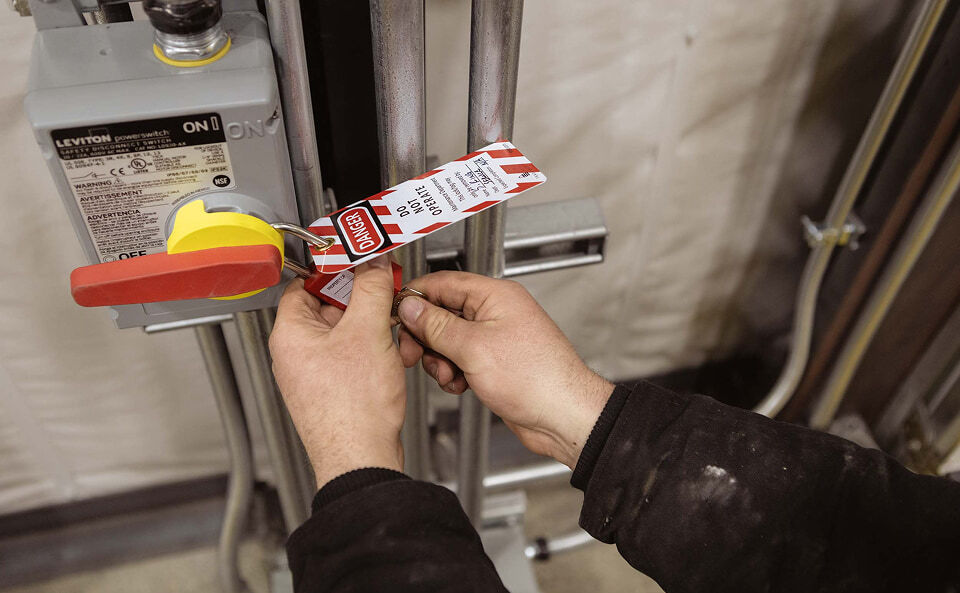For many facilities, dock equipment is only noticed when it fails. A leveler stops working mid-shift, a restraint doesn’t engage, or a door motor burns out, and suddenly operations are at a standstill.
These breakdowns are more than inconveniences. They lead to unplanned downtime, frustrated drivers, emergency service calls, and safety risks.
The truth is, equipment rarely fails without warning. There are always early signals, if you know what to look for.
Here are five signs your dock equipment may be headed for a breakdown.

1. Increasing Emergency Repairs
If your team is calling vendors for emergency fixes more often, it’s a red flag. The average service call costs $437 per visit, not including parts. Beyond the bill, emergency calls waste time, disrupt schedules, and often mean paying premium labor rates.
Facilities across industries report that one hour of unplanned downtime costs an average of $25,000, and for large manufacturers the number can be much higher.
Proactive step: Track emergency repair frequency. If it’s climbing, it’s time to switch from reactive fixes to usage-based preventive maintenance.
2. Uneven Wear Across Docks
Some docks are overused while others sit idle. This uneven utilization accelerates wear on high-traffic doors and levelers, shortening their lifespan. A dock leveler may only last 10 years with minimal care, but with balanced usage and proactive service it can exceed 15+ years.
Proactive step: Use utilization analytics or tracking methods to spread workload evenly across all bays. This prevents overworking a few assets while others go underused.
3. Slow or Inconsistent Operation
If dock levelers rise sluggishly, doors hesitate, or restraints struggle to engage, it’s a clear warning sign. These performance dips often precede total failure.
Left unchecked, they can also create safety hazards, such as a restraint failing to hold a trailer in place.
Proactive step: Train employees to log performance changes and set alerts for cycle count thresholds, ensuring equipment is serviced before failures occur.
4. Rising Energy Costs
Doors or levelers that don’t seal properly allow air to escape, increasing heating and cooling expenses. Without monitoring, facilities often fail to connect energy waste to equipment condition.
Proactive step: Audit door activation and open times. Equipment left open too long or with damaged seals is a silent budget drain. Energy loss analytics or tracking can highlight patterns and justify timely fixes.
5. Incomplete or Missing Service Records
If service history is scattered across clipboards, binders, and spreadsheets, diagnosing repeat failures becomes guesswork. Without centralized logs, teams waste time, miss patterns, and lose accountability with vendors.
Proactive step: Digitize service history and link it to specific assets. This creates a single source of truth, so teams can identify recurring issues and plan budget spend with confidence.
The Magnitude of Downtime
Unplanned downtime is one of the costliest problems for industrial operations. Research shows it can consume 11% of annual turnover for Fortune Global 500 companies, an estimated $1.5 trillion (Evocon).
Manufacturers lose an average of 800 hours of equipment downtime per year, equivalent to about 15 hours per week (AcoupleofGurus).
The good news is that proactive and predictive maintenance can reduce unplanned downtime by 35–50%, cutting both costs and disruptions (Sumitomo Drive).
Real-World Results
Facilities that move from reactive to proactive maintenance see major gains:
-
30–40% lower maintenance costs
-
Up to 50% fewer unplanned downtime events
-
20–25% greater equipment availability
And importantly, 65% of maintenance professionals say proactive maintenance is the most effective way to reduce downtime incidents.
Quick Snapshot: Reactive vs Proactive Maintenance
| Factor |
Reactive |
Proactive |
| Repair Costs |
$437 avg. per emergency call |
30–40% lower costs |
| Downtime |
Frequent, unplanned |
35–50% fewer unplanned events |
| Equipment Life |
5 - 7 years |
10+ years |
| Energy Costs |
Higher due to leaks |
Reduced with monitoring |
| Visibility |
Scattered paper records |
Centralized, real-time logs |
The Bottom Line
Breakdowns don’t happen overnight. Rising emergency calls, uneven wear, sluggish performance, rising energy costs, and missing service history are all early warning signs.
Facilities that act on these signals, using live diagnostics, usage-driven service alerts, and centralized service logs, can eliminate guesswork, reduce costs, and extend the life of their assets.
Don’t wait for equipment to fail. Spot the signs, act early, and keep your docks running at peak performance.